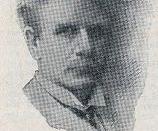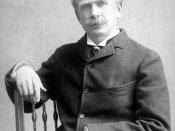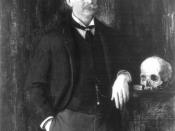"An Occurrence at Owl Creek Bridge", is one of the best American short stories and is considered Ambrose Bierce's greatest work. First published in Bierce's short story collection "Tales of Soldiers and Civilians" in 1891, this story is about Peyton Farquhar, a southern farmer who is about to be hanged by the Union Army for trying to set the railroad bridge at Owl Creek on fire. While Farquhar is standing on the bridge with a rope around his neck, Bierce leads the reader to think that the rope snaps and he falls into the river, and then makes an amazing escape and finally returns to his farm, to be reunited with his wife. However the ending of the story is totally different, in fact, Farquhar is hanged and these imaginings take place seconds before his death. Ambrose Bierce's trick ending succeeds because of the way he manipulated the text by changing the narrative point of view from one type to another.
"An Occurrence at Owl Creek Bridge" is divided into three sections, with each section having a different narrative form.
In the first section, the author uses dramatic narration: the story is told by no one. With the disappearance of the narrator, the reader is now the direct and immediate witness to the unfolding drama. The reader views the work from the outside. In the beginning of this story the readers are informed of all the preparations for a man about to be hanged: the set up for the hanging, the characters involved and the surroundings. The narrator gives an incredible and beautiful snapshot of the scene describing the water, the guards, and his restraints. "...Vertical in front of the left shoulder, the hammer rested on the forearm thrown strait across the chest- a formal and...



I would rate this good
i do not read much american storyies due to i am from australia and i found this quite interesting and i advise other people to read it..
3 out of 5 people found this comment useful.